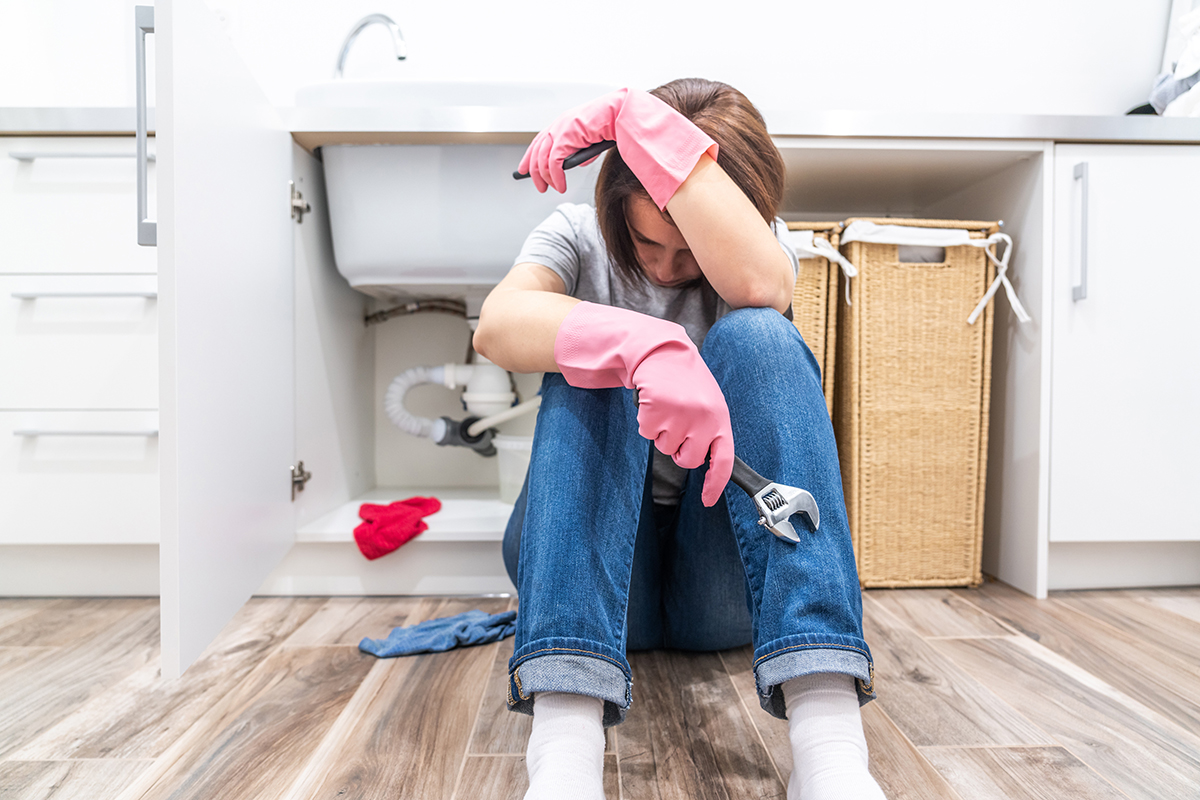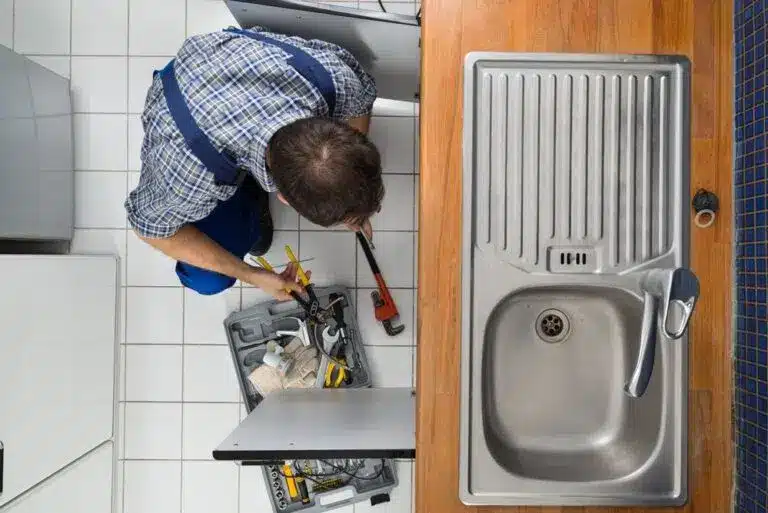The Definitive Guide to Fixing a Leaky Waste Disposal Unit
The Definitive Guide to Fixing a Leaky Waste Disposal Unit
Blog Article
Every person has got their own individual perception with regards to How to fix a pretty consistent leak from my garbage disposal.

Waste disposal unit are vital kitchen area home appliances that assist in disposing of food waste successfully. Nonetheless, a leaking waste disposal unit can be a discouraging and unpleasant problem to deal with. Luckily, lots of leakages can be repaired quickly with a few basic steps. In this post, we will certainly review exactly how to deal with a dripping waste disposal unit effectively.
Intro
Garbage disposals are set up under cooking area sinks and are made to shred food waste into smaller items, enabling it to go through the pipes system easily. While these tools are usually dependable, leaks can occur gradually due to wear and tear, loosened links, or damages to the system.
Step-by-Step Overview to Dealing With a Leaking Waste Disposal Unit
Turn Off the Power
Prior to trying any fixings, ensure that the power to the waste disposal unit device is shut off to stop the danger of electric shock.
Find the Leak
Recognize the specific location of the leakage and figure out the reason
Tighten up Connections
Make use of a wrench to tighten up any loose links in between the disposal system and the plumbing system.
Change Seals or Gaskets
If the leak is because of worn seals or gaskets, eliminate the old elements and replace them with new ones.
Patching Cracks or Openings
For splits or openings in the disposal device, usage epoxy or a suitable patching product to secure the broken location.
Identifying the Source of the Leakage
Before trying to repair a dripping waste disposal unit, it is important to recognize the source of the leakage. This can usually be done through visual examination or by performing straightforward tests.
Visual Examination
Evaluate the garbage disposal system meticulously for any kind of indications of water leakage. Pay very close attention to locations around seals, gaskets, and link factors.
Examining for Leakages
One means to examine for leaks is by running water via the disposal device and checking for any noticeable indications of leak.
Common Root Causes Of Leakages in Garbage Disposals
Worn Seals and Gaskets
Seals and gaskets play a crucial function in stopping water from dripping out of the waste disposal unit. Over time, these components can weaken, causing leaks around the disposal device.
Loose Connections
The links between the waste disposal unit and the pipes system can come to be loosened with time, triggering water to leakage out throughout procedure.
Splits or Openings in the Disposal Unit
Physical damage to the garbage disposal, such as splits or holes in the housing, can also result in leaks.
Devices and Materials Needed for Dealing With a Dripping Waste Disposal Unit
Before starting the repair service process, collect the essential devices and materials, consisting of a screwdriver, adjustable wrench, plumbing's putty, replacement seals or gaskets, and epoxy or patching product for repairing cracks or openings.
Evaluating the Garbage Disposal After Repair Service
When the repair work is total, check the waste disposal unit by running water through it to guarantee that the leakage has been fixed.
Preventive Maintenance Tips to Avoid Future Leaks
To avoid future leakages, it is essential to do routine upkeep on your garbage disposal. This includes maintaining it clean, avoiding putting non-food things or hard things down the disposal, and occasionally looking for leakages or other issues.
Conclusion
Finally, taking care of a leaking waste disposal unit is a relatively uncomplicated process that can be finished with fundamental devices and materials. By following the steps described in this post and practicing preventive maintenance, you can maintain your waste disposal unit in good working condition and prevent expensive repair services in the future.
HERE’S HOW TO FIX YOUR GARBAGE DISPOSAL
WHAT TO DO IF SOMETHING IS STUCK IN YOUR GARBAGE DISPOSAL
If the impeller won’t turn, there’s probably something stuck in the disposal. It could be a steak bone or peach pit, although plumbers report pulling all sorts of inappropriate objects out of disposals, such as bottle caps or aluminum foil. Make sure power to the disposal is off, and look inside to see if you can see the source of the jam.
Never stick your fingers in a disposal. Pull out anything you see with tongs or pliers.
If the disposal still won’t work, it may be time to call a plumber or consider buying a new disposal. GEM Plumbing & Heating is here for all of your garbage disposal needs.
WHAT TO DO IF YOUR GARBAGE DISPOSAL DRAIN IS CLOGGED
Take everything out from underneath your sink and put a bucket or other container under your disposal to catch any water that drains out. Disconnect your disposal from the power supply. If it’s plugged into a wall outlet, unplug it. If it’s hardwired into an electrical box, go to the electrical panel and turn off the breaker for the disposal. Pour ¼ cup of baking soda into the drain, followed by ½ cup of white vinegar. Give the solution a few minutes to fizz and do its work. Look into the disposal with a flashlight to see if you can see an object that might be causing the clog. If you see it, remove it using tongs or pliers. MORE TIPS ON DEALING WITH A CLOGGED GARBAGE DISPOSAL
Never use drain cleaner in a garbage disposal. It can damage the plastic parts inside the disposal. You can also be splashed with the caustic liquid while working to clear the clog. Beware! Never stick your fingers into a garbage disposal. Trust us — not a good idea. In many instances, your dishwasher drains through your garbage disposal. This allows the disposal to grind any large food particles that may be drained out of your dishwasher. There are some jurisdictions, however, where the plumbing code prohibits such a connection. WHAT TO DO WHEN YOUR DISHWASHER DRAINS THROUGH THE DISPOSAL
Run some water in the sink so your plunger has at least a ½-inch of water to create a seal and plunge vigorously up and down several times. You may need to repeat this several times. Run hot water down the drain to clear any residue that remains.

I discovered that post about Why Is when doing research the internet. Be sure to take the opportunity to promote this blog entry if you enjoyed reading it. Thank you for taking the time to read it.
Booking Page Report this page